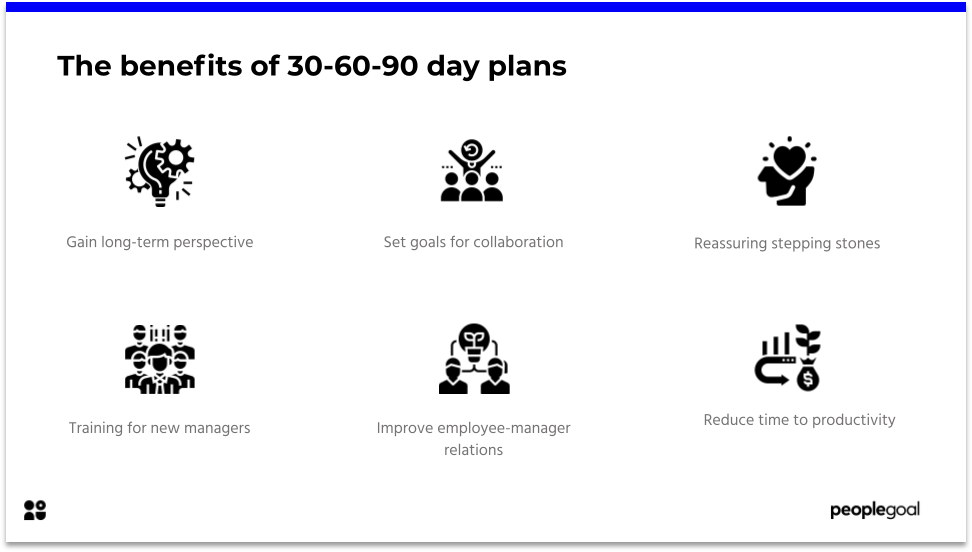What is employee empowerment?
Employee empowerment means giving employees a degree of autonomy, responsibility, and freedom. It is a management strategy that aims to ‘hand over the reins’ to employees, giving them authority over decision making and how they achieve their goals. It means giving them control and responsibility to manage their role, set their objectives and be the decision-maker over their tasks, deadlines, and priorities. It is essentially the opposite of micro-management.
What is the purpose of empowerment?
The main purpose of employee empowerment is creating alignment between individual aspirations and wider organizational goals, which will result in a multitude of benefits for both the individual and the business. By applying the principle of employee empowerment, employees will find that their job responsibilities grow and that their job enrichment will be greater.
Global studies reveal that 79% of people who quit their jobs cite ‘lack of appreciation’ as their reason for leaving. In contrast, employees that feel in control of their career are 20% more likely to stay in their roles. By providing employees with the means to make important decisions, leaders counteract dependence on top-down control which originates from a lack of trust in employee abilities. When employees are given more autonomy over their work they feel trusted and inspired, and therefore more likely to stay with the organization and work more productively.

Why is employee empowerment important?
Employee empowerment is so important because of the impact it can have on a business’s bottom line. When employees are encouraged to develop and improve their skillset, productivity soars and organizations can easily out-perform their competition. A company that empowers its employees will record higher levels of engagement, will be able to retain its top talent and improve its brand image.
What are the benefits of employee empowerment?
There are a plethora of benefits to be enjoyed by organizations that empower their employees. Research from the the Harvard Business Review suggests that employees that feel empowered at work are associated with stronger job performance, job satisfaction and commitment to the organization. Employees will begin to take ownership over their work, which will lead to heightened productivity and a better quality of work. In addition, employees will feel more engaged and motivated, which will contribute to overall business success.
Organizations that encourage their leaders to empower their teams will see improved communication and a workforce that actively embrace change. This will drive overall innovation and have a marked impact on the business’s bottom line.

How to empower your employees
An employee empowerment policy need to be incorporated into two key areas of the business: company culture and corporate strategy. The organization must make a commitment as part of its wider culture to encourage employee autonomy and growth, as well as implementing a company wide strategy that facilitates empowerment across all levels.
-
To get started, the organization needs to incorporate employee empowerment into the day to day roles and tasks of its employees. Ensure that you enable, inspire and encourage your team to take proactive steps to increase their level of responsibility and accountability for their work. Be ready to coach and develop your team to support employee growth.
-
Instead of an annual performance review, managers can set regular one-on-one meetings throughout the year to facilitate communication, and provide coaching to help employees solve problems that arise while completing their tasks.
-
Finally, a survey of nearly 900 mid-market firms in the US found that 42% believe that digital transformation is the key to employee empowerment. Digital transformation allows new empowerment options through the creation of a connected workplace where employees and systems can be seamless connected anytime, anywhere.

9 Ways to Encourage Employee Empowerment
1. Provide Opportunities for Upward Mobility
Employees who see no opportunities to improve and go further in their career, won’t be your employees for very long. Providing opportunities for upward mobility and employee empowerment go hand in hand. Employee empowerment helps to develop a range of skills including leadership and management. While going further in your career demands such skills.
2. Delegate More Than Just Work
Make sure to delegate work. How can employees develop and feel empowered without getting greater responsibilities? Delegate with the remit of growing, developing and empowering your employees.
3. Constructive Feedback Along the Way
As we will get on too soon, mistakes will happen as you teeth into your employee empowerment process. What is important is that you offer good constructive feedback during the process. Constructive Feedback means that when employees do something wrong, it is better to explain how they can improve than be critical. Instead of bluntly telling someone where they went wrong, or praising them when they do something right, be specific about the actions which you base your reasoning on. Be specific about where they need to improve and how.
4. Recognition for Success and Effort
There are a plethora of reasons why you should provide recognition and appreciation. Showing recognition to your employees for their hard work and for their successes. Your recognition provides motivation to them and will encourage them to take action, embrace decision making and engender creativity and persistence.
5. Provide Time
This one can be tough at times, especially if you are managing a lot of people. You can’t always give your employees as much time as you would like or as they would like. You can give them time though. Don’t forget it. And they will need it, especially at the start of their employee empowerment journey.
Another important point with regard to time is that you need to give your employees time to make empowerment work. Time to figure it out, time to try out new methods and strategies.
6. Forgive Mistakes
Giving employees a greater degree of autonomy is bound to lead to mistakes. But then again, if you aren’t making mistakes, then you’re not challenging yourself, your team and your organization. However, make sure that everyone knows the differences between an unacceptable versus an acceptable mistake.
7. Encourage Communication
Do not make the mistake of assuming that employee empowerment means that communication is now the employee’s problem, and not yours. Instead, what it means is that communication is now more two-way than before. Establishing better communication channels will make the empowerment process a lot easier.
8. Keep Accountability Clear
Making sure that employees know that their decision making is their own. They are accountable. This may seem like a bit of a paradox, but it actually works. Hear me out. By giving accountability for their own work, it means that employees have genuine ownership over their work. Giving them autonomy and responsibility – key ingredients of employee empowerment.
Employee empowerment is a powerful tool to improve employees’ skill set, leadership and management abilities as well as decision-making. The increased scope of responsibility and autonomy means that employees will feel more motivated, more appreciated, more engaged and feel like they are developing.
9. Provide Opportunities to Teach Flexibility and Creative Thinking
Although employee empowerment will engender flexibility and creative thinking, it is important to provide employees with opportunities to develop these skills. It will make the process of empowerment easier and more effective. With regards to flexibility, allow the employee certain benefits, flexible working or remote working for example. With respect to creative thinking, although doing a task the same way is a sure-fire way of getting things done, encourage the employee to think of new and innovative ways or strategies to integrate into their work.
Ready to 3x Your Teams' Performance?
Use the best performance management software to align goals, track progress, and boost employee engagement.






